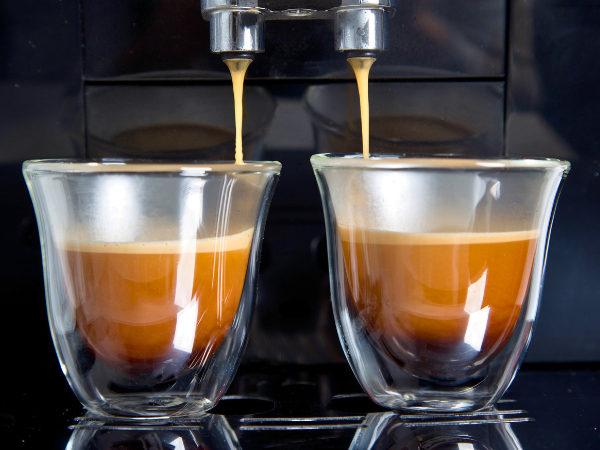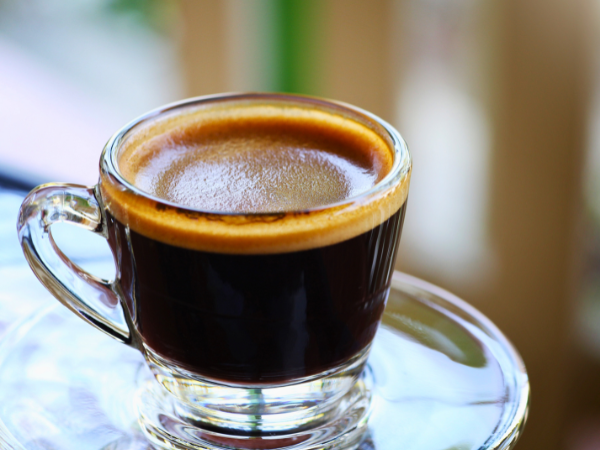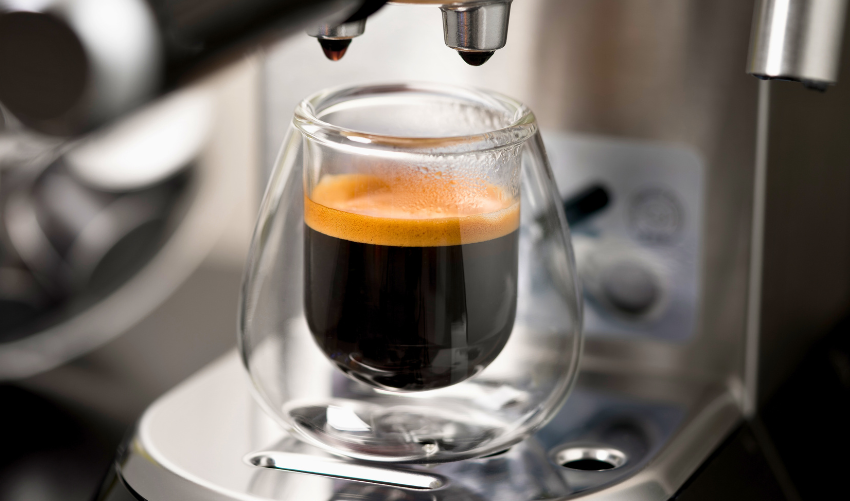Espresso isn’t just a type of coffee — it’s the foundation of modern coffee culture. From lattes and cappuccinos to macchiatos and flat whites, so many beloved drinks start with a single shot of rich, concentrated espresso.
What Is Espresso?
Espresso is a small, highly concentrated coffee shot. It is made by forcing hot, pressurized water through finely ground coffee. This method creates a unique drinking experience. Espresso has several key features:
- Concentrated Brew: Espresso delivers intense coffee flavors.
- Defining Crema: A reddish-brown velvety foam layer forms on top. This indicates proper extraction and freshness.
- Flavor Profile: Known for its bold and complex flavor, espresso often has a rich body and lingering finish.
To better understand espresso, consider the following table:
| Aspect | Description |
|---|---|
| Size | Typically 1 to 2 ounces |
| Brewing Time | 30 seconds to extract |
| Serving Style | Often served in small cups |
Espresso serves as the base for many coffee drinks. This includes lattes, cappuccinos, and macchiatos. Each drink showcases the rich taste of espresso.
The Rich History Of Espresso
The story of espresso begins in Italy. Its invention dates back to the late 19th and early 20th centuries. Coffee lovers wanted a way to serve coffee faster. This led to the creation of espresso machines.
Key innovators played a significant role:
- Angelo Moriondo: He received the first patent for an espresso machine.
- Luigi Bezzera & Desiderio Pavoni: They made important improvements. Their work led to the commercialization of espresso.
- Achille Gaggia: He introduced the lever-piston system. This innovation allowed for the creation of the iconic crema.
Espresso soon spread beyond Italy. It formed the foundation of modern coffee culture and espresso bars around the world. Today, espresso is enjoyed globally.
Popular Espresso-Based Drinks & Recipes
This rich and bold brew forms the base for many popular espresso-based drinks. Each drink brings its own unique flavor profile and character. Learning about these drinks offers a deeper appreciation for espresso.
Classic Espresso Creations
Classic espresso drinks are timeless favorites in coffee shops. Each drink highlights the rich taste of espresso. Here are some popular classic espresso creations:
- Americano: Espresso diluted with hot water, offering a milder coffee experience.
- Cappuccino: Equal parts espresso, steamed milk, and a thick layer of milk foam.
- Latte: Espresso with a larger volume of steamed milk and a thin layer of microfoam, often sweeter.
- Macchiato: Espresso “marked” with a small dollop of foamed milk.
- Cortado: Equal parts espresso and warm, lightly steamed milk (no foam), known for cutting the espresso’s acidity.
- Flat White: Espresso with finely textured microfoam milk, often with a stronger coffee-to-milk ratio than a latte.
- Ristretto & Lungo: Variations of espresso shots. Ristretto is a shorter, more concentrated pull; Lungo is a longer, more diluted pull.
To prepare, brew the espresso. Steam the milk until hot. Pour equal parts of espresso, steamed milk, and foam. Enjoy your cappuccino!

Advanced & Regional Espresso Recipes
Espresso culture varies across regions. Many advanced recipes reflect local traditions. These drinks offer unique flavors and experiences. Here are some noteworthy regional espresso recipes:
- Affogato: A scoop of vanilla ice cream topped with a shot of hot espresso.
- Espresso Tonic: A refreshing mix of espresso and tonic water over ice.
- Espresso Martini: A cocktail combining espresso, vodka, and coffee liqueur.
- Caipirinha Coffee: A Brazilian twist mixing cachaça, espresso, and sugar.
To prepare, fill a glass with ice cubes. Pour tonic water over the ice. Slowly add the espresso on top. The result is a refreshing drink with a delightful contrast of flavors.
Espresso Shots: Anatomy & Nutritional Facts
Understanding espresso shots is essential for coffee lovers. This section explores the anatomy and nutritional facts of espresso shots. It covers their size, caffeine content, and caloric value.
How Many Ounces Is A Shot Of Espresso?
Espresso shots come in different sizes. The most common are:
- Single Shot (Solo): Typically 1 ounce (approx. 30 ml) of liquid.
- Double Shot (Doppio): The standard in most cafes, around 2 ounces (approx. 60 ml).
Despite their small volume, espresso shots pack a punch. They are a highly concentrated form of coffee. This means you get rich flavor in a small amount.
The table below shows the differences between single and double shots:
| Type of Shot | Volume (oz) | Volume (ml) |
|---|---|---|
| Single Shot | 1 | 30 |
| Double Shot | 2 | 60 |
Many people enjoy multiple shots. Here are the caffeine levels:
- 1 Shot: 63 mg
- 2 Shots: 126 mg
- 3 Shots: 189 mg
- 4 Shots: 252 mg
Factors affecting caffeine include:
- Bean type (Robusta has more)
- Roast level (lighter roasts often have slightly more)
- Grind size
- Extraction time
Keep in mind that caffeine content can vary based on several brewing factors, so these numbers are estimates.
Caffeine Content In Espresso
Caffeine is a key component of espresso. A single shot typically contains around 63 mg of caffeine. However, this can vary. It can range from 30-100 mg depending on several factors.
Factors affecting caffeine content include:
- Type of coffee bean used
- The roast level
- Grind size
- Extraction time
Understanding caffeine content helps coffee drinkers manage their intake. For example, a double shot has double the caffeine. This is important for those who want more energy or a stronger flavor.
Here’s a simple overview of caffeine content:
| Number of Shots | Caffeine Content (mg) |
|---|---|
| 1 Shot | 63 mg |
| 2 Shots | 126 mg |
| 3 Shots | 189 mg |
| 4 Shots | 252 mg |
These amounts are estimates, and actual caffeine levels can vary based on bean type, roast level, grind size, and extraction time.

Calories In A Shot Of Espresso
Espresso is low in calories. A plain shot contains very few calories, typically between 1-5 calories. This is true for espresso consumed black, without additions.
Adding items increases the calorie count. For example:
- Milk: Adds calories based on type and amount.
- Sugar: Increases calorie count significantly.
- Syrups: Can add many calories.
- Whipped cream: Also increases calories.
For those watching their calorie intake, plain espresso is a great choice. It provides a bold coffee experience without extra calories.
Choosing The Best Espresso Beans
Choosing the best espresso beans is crucial for a great cup. Good beans make rich flavors and a wonderful crema.
Ideal Characteristics For Espresso Beans
When selecting espresso beans, certain characteristics stand out. These traits enhance the flavor and overall experience of your espresso. Here are some ideal characteristics:
- Roast Level: Medium to dark roasts are most common. They bring out rich flavors and support good crema.
- Bean Blend: A mix of Arabica and Robusta is often best. Arabica offers flavor complexity, while Robusta adds crema and body.
- Freshness is Key: Fresh beans make a big difference. Look for a roast date ideally within 2-4 weeks for optimal flavor and crema production.
Selecting beans with these characteristics helps your espresso machine perform at its best—producing smooth, flavorful shots every time.
Top Bean Recommendations For Rich Flavor
Choosing the right beans can elevate your espresso. Here are some highly recommended options:
- Lavazza Super Crema: A classic Italian blend. Known for consistent crema and a smooth, balanced taste.
- Illy Classico: This is a popular 100% Arabica blend. It offers consistent quality and a sweet, balanced flavor profile.
- Intelligentsia Black Cat Espresso: A highly regarded specialty blend. It offers nuanced flavors and works well in various espresso drinks.
Each of these blends brings something special. They enhance the espresso experience. Whether you prefer a classic Italian taste or a more complex profile, these beans will not disappoint.
Selecting The Perfect Espresso Machine
Selecting the perfect espresso machine is crucial for brewing a rich and flavorful shot. Understanding the different types of machines and their features helps you choose the right one for your home.
Types Of Home Espresso Machines
Home espresso machines come in various types. Each type has unique features and benefits. Here’s a breakdown of the main types:
- Manual/Lever Machines: Offer full control over the brewing process. They require skill but reward users with exceptional results.
- Semi-Automatic Machines: Require the user to grind, tamp, and pull shots. They balance control with convenience.
- Super-Automatic Machines: Grind beans and brew coffee at the touch of a button. Ideal for convenience but offer less control over variables.
Each type serves different needs, from hands-on enthusiasts to those who prioritize convenience.
Key Features To Consider
Choosing the right espresso machine involves understanding key features. These features affect the quality of your espresso. Here are some important aspects to consider:
- Pressure (Bars): Most machines use 9-15 bars of pressure for proper espresso extraction.
- Temperature Stability (PID): PID controllers ensure consistent brewing temperature, crucial for optimal flavor extraction.
- Built-in Grinder: Convenient for fresh grinding. However, external grinders often offer better grind quality and consistency.
- Steam Wand: Essential for steaming milk for lattes and cappuccinos. Look for good power and control for quality microfoam.
Evaluate machines based on these features. They determine your brewing experience and the taste of your espresso. Take your time to find the right fit for your home.
